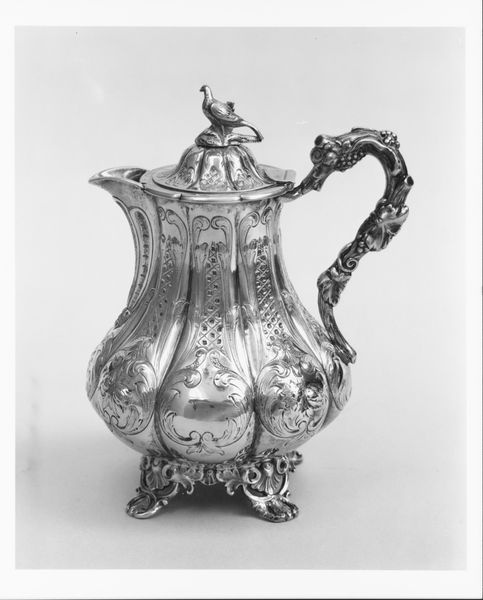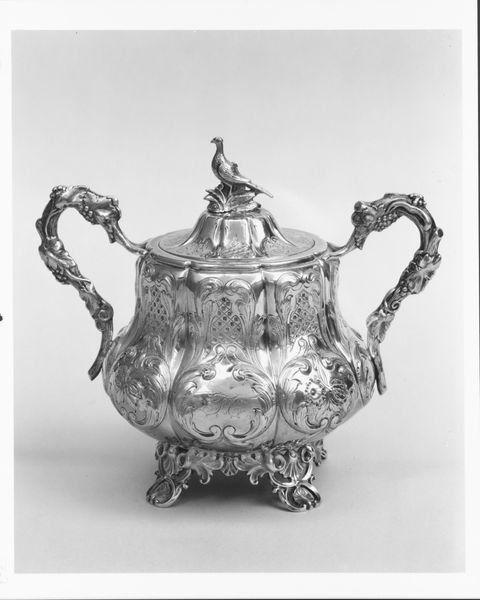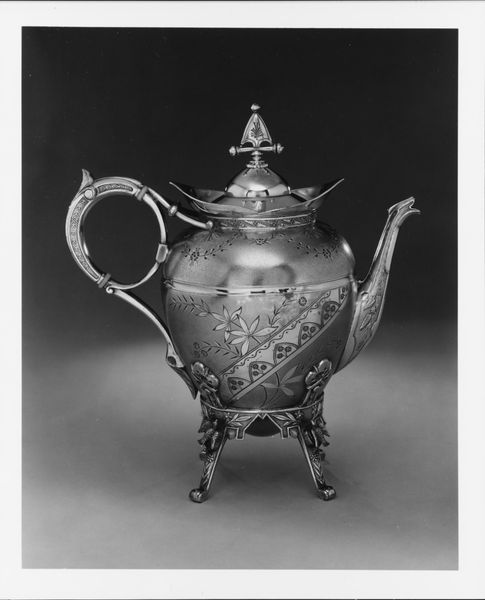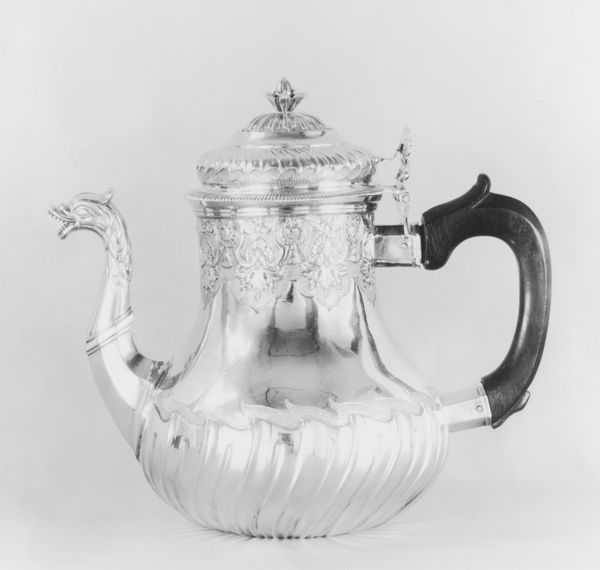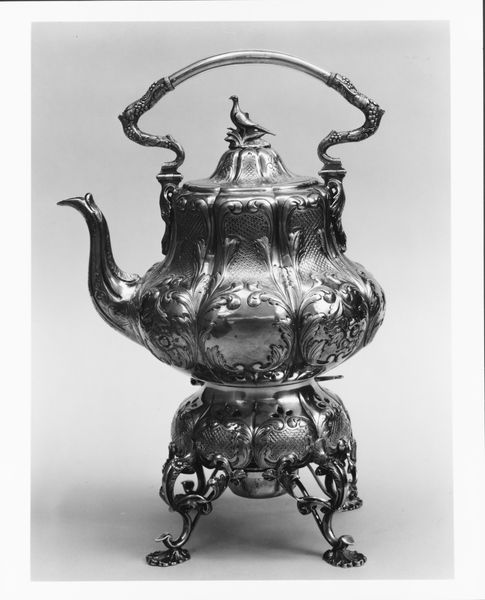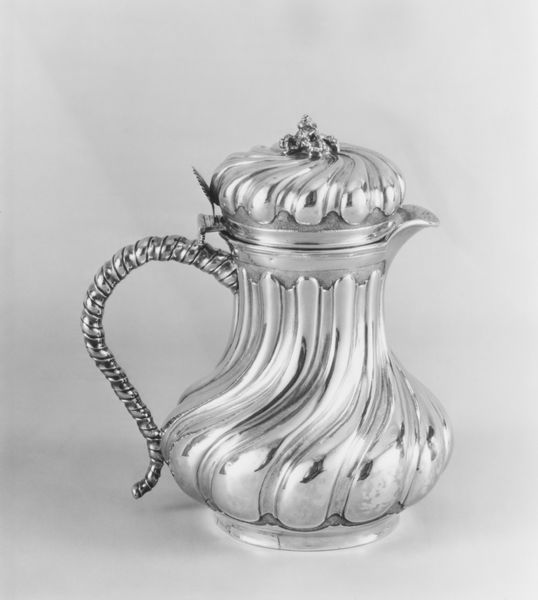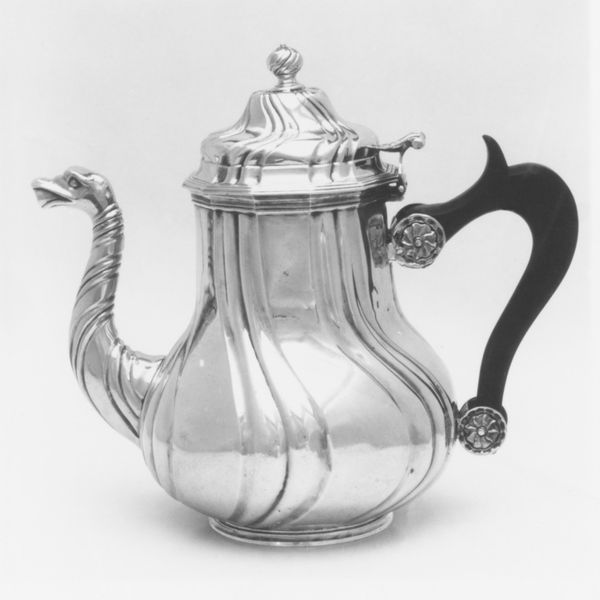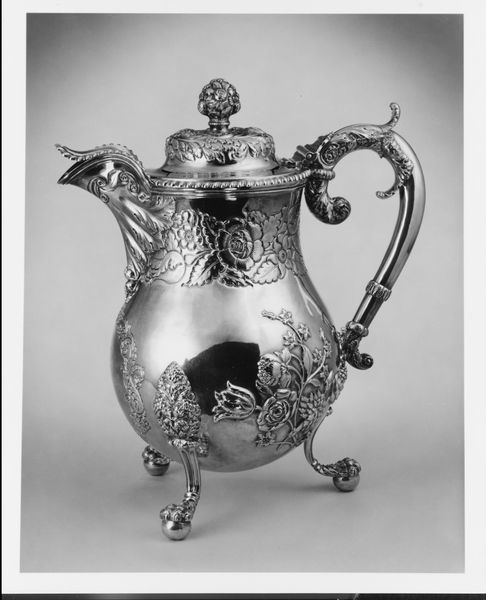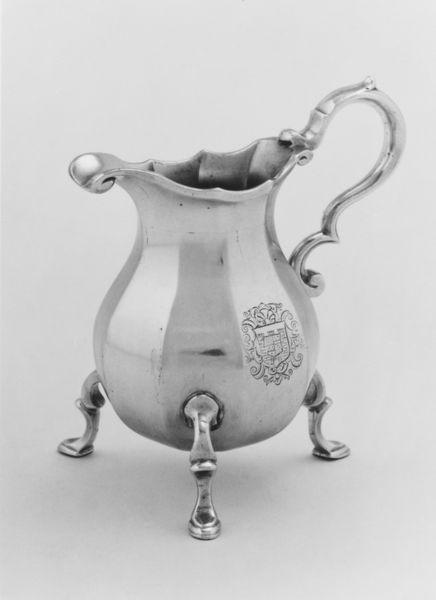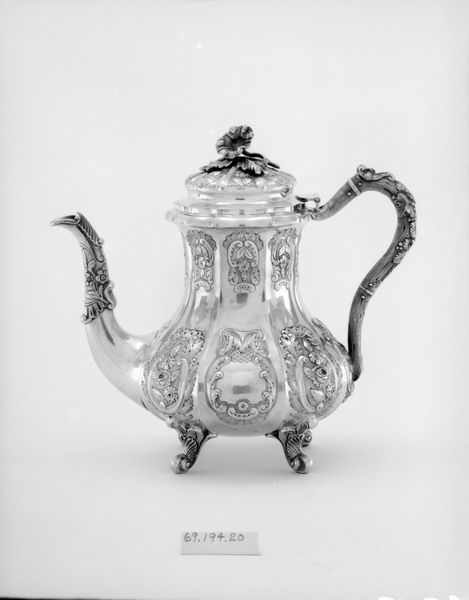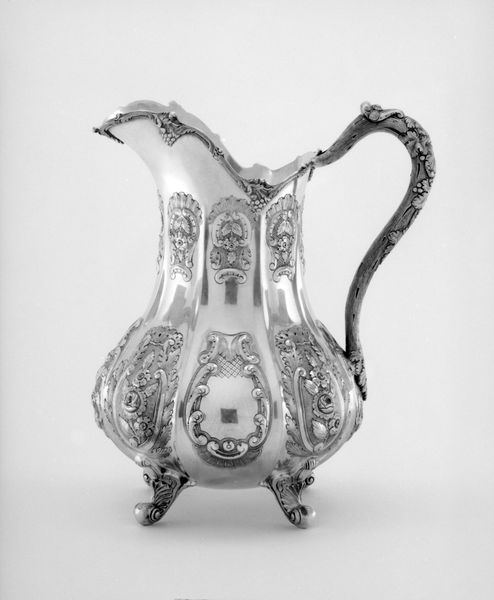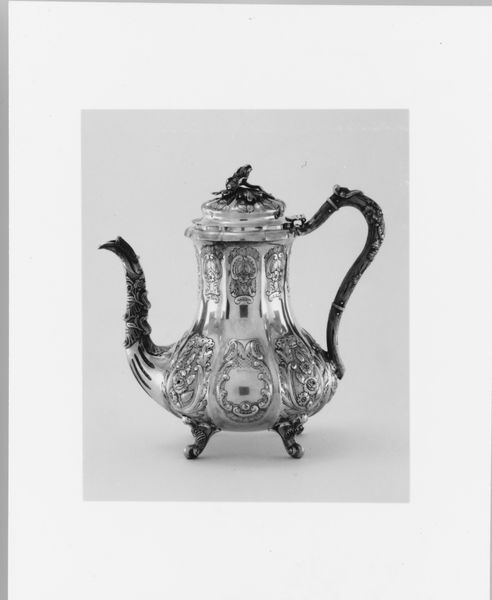
silver, photography
#
silver
#
photography
#
black and white theme
#
stoneware
#
united-states
Dimensions: 9 1/16 x 6 7/16 x 5 in. (23 x 16.4 x 12.7 cm); 23 oz. 2 dwt. (718.5 g)
Copyright: Public Domain
Curator: Looking at this photograph of an elaborate silver milk pot, created between 1848 and 1851 by the firm Ball, Tompkins & Black, now residing at the Metropolitan Museum of Art, I'm struck by its opulent design and the social context it represents. Editor: My initial impression is of pure exuberance. All that ornate detailing, from the floral patterns to the bird perched on the lid—it's a celebration of excess, visually delightful but heavy. Curator: Precisely! Think of the era—the mid-19th century in America. Industrialization was booming, creating new wealth, particularly in urban centers. Objects like this milk pot were not merely functional; they were statements of social status, signs of conspicuous consumption that showed one had truly “made it.” The company who created the item served wealthy Americans eager to display their success through fine household goods. Editor: The bird atop, then, becomes more than decoration. Birds have often been used to signify freedom or divinity in different cultures. Its prominent positioning tells me that it's perhaps intended to signify wealth, status, and the upward mobility that was increasingly available to Americans in that period. Curator: An interesting interpretation. From my point of view, such overt displays of wealth could also have provoked resentment in a society increasingly divided between the haves and have-nots. Such intricate designs of luxury items were made accessible because of America’s industrial advancements but attainable by very few. The political message conveyed by commodities must have resonated with citizens then, as now. Editor: And even without consciously understanding its place in that social and economic tapestry, someone interacting with the piece likely responded viscerally to that density of visual information, and that excess would then affect your perception. So even the simple act of sharing milk from the pot became something larger than that, a ritual with deeper connotations, and a status symbol to admire. Curator: That’s well observed, and I'd suggest this photograph freezes a moment in social history, inviting us to question the values and power structures embedded in seemingly simple objects. Editor: Absolutely. The image then invites one to examine one’s relationship with objects, class and desire as relevant themes in our present lives, regardless of period and origin. Thank you. Curator: Thank you, a perspective vital in how we regard historical art.
Comments
No comments
Be the first to comment and join the conversation on the ultimate creative platform.
